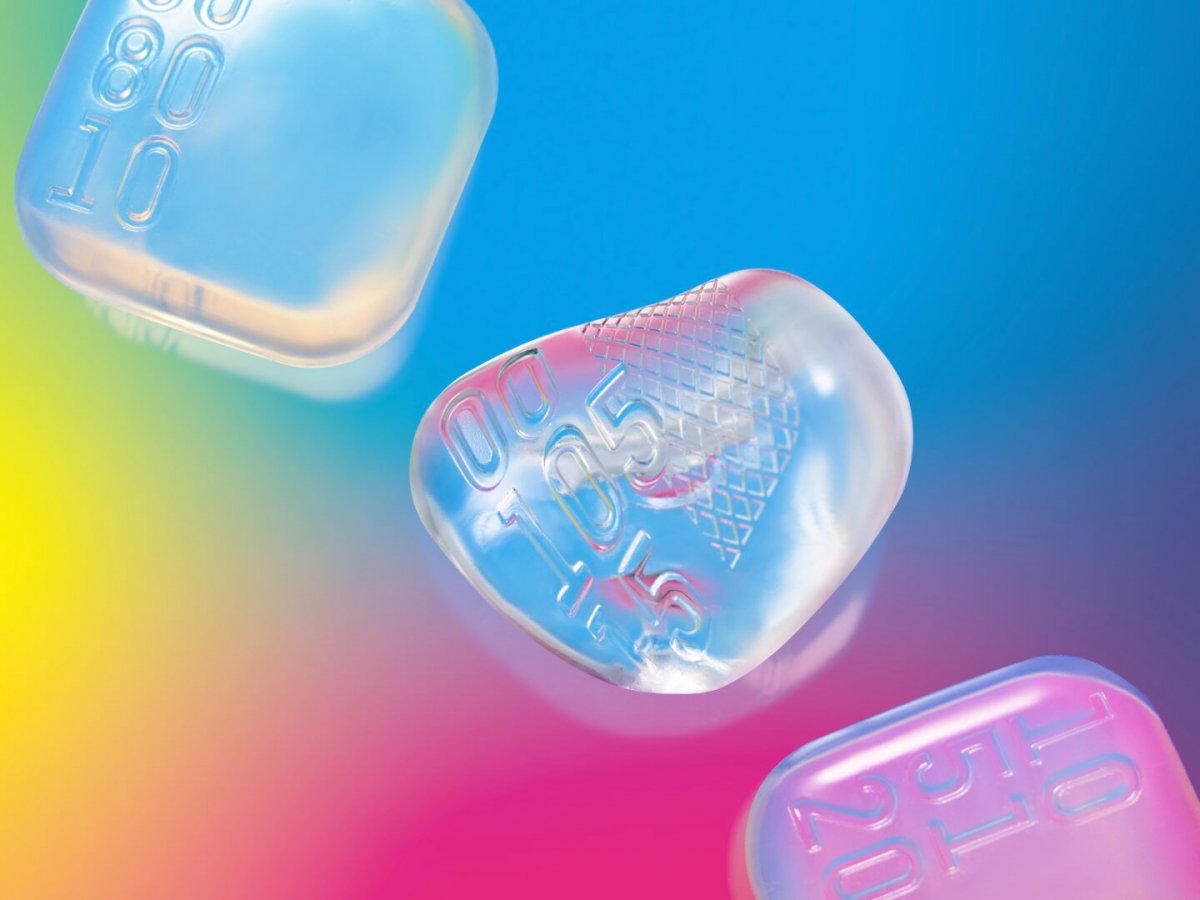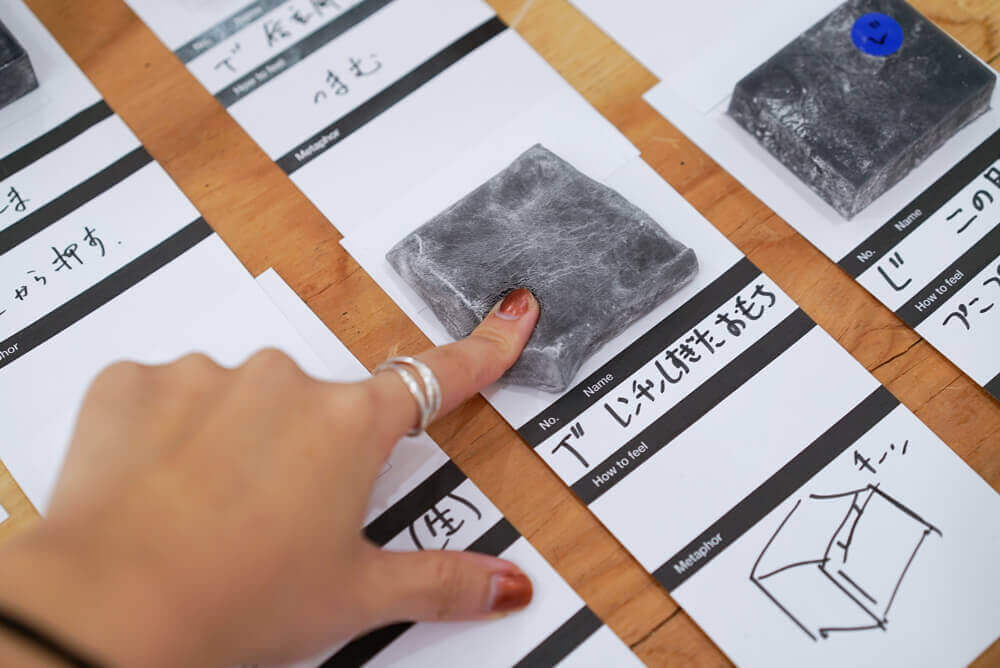
Haptic design smooths the way for a redefinition of Taica's αGEL
Outline
Beyond functionality: redefining αGEL
The incredible functionality of αGEL is well-known by everyone from joggers to aerospace engineers. Taica Corporation’s core product and technology is most famous for its heat dissipation, vibration reduction and shock absorption (one can drop an egg on it from more than 50 feet above and the egg would be unscathed). But how else can this soft, gel-like substance be used, or thought of?
In collaboration with Loftwork, this project sought to redefine the gel – beyond its properties or functions. By focusing on the sensory experience of touch, and borrowing from Loftwork’s experience in haptic design, new possibilities were created.
Background
Since its founding in 1948, Taica Corporation has worked on multifunctional material. In recent years, the R&D-oriented company has been focusing on creating high-quality products in different fields, to stand out from a slew of manufacturing companies. Even with αGEL’s unique qualities, Taica is still committed to innovating and diversifying both its business and product development strategies.
For this project, Taica Corporation sought to redefine αGEL. Working the help of Loftwork, they were able to not only place αGEL in a wholly new context, but also create an effective new method to communicate the product.
Creating a sensory standard
For company researcher Manabu Mikuni and αGEL Sales Department employee Hideyuki Uchida, two members who led the project, it was often difficult to convey the ‘value’ of the gel to clients. The company had been interested in creating a standard – but numerical values are often obfuscating and intangible. “Changing the hardness of a gel from 43 to 45 means that the number has changed, but what does that really mean? How does that help anyone?” said Mikuni. Since clients had always been interested in the textures of the gel samples, seeing αGEL through the lens of haptic design helped transform it into something more engaging and tangible. This culminated in an interactive sample kit and UX map.
Outputs
UX Map: Haptics of Wonder


Created through a haptic framework, this UX Map allows users to identify the types of αGEL through their textures. Haptics refers to the sense of touch – and the experiences or feelings associated. This allowed Taica’s αGEL types to be evaluated not only on functionality but also on their ‘feel’. The materials were plotted on soft–hard and sticky–smooth axes, to present the variety of their textures.
In workshops set up by Loftwork, a large number of sample gels were categorized according to how they felt when touched. 12 distinctive types of αGEL were selected and named, based on a research method examining the relationship between phonemes and impressions. We expect to see new possibilities for the application of αGEL through this map.
Interactive Sample Kit: with 12 samples of αGEL (vol.1)

This sample kit contains 12 types of αGEL. This will help users wishing to incorporate αGEL into their designs/innovations to better understand the different types of αGEL.
Just like a coloring book with 12 colors, this kit has 12 textures, letting users experience each gradation. By using it with the αGEL UX map (‘Haptics of Wonder’), users will be able to grasp each gel’s distinguishing features in a tangible way.
Process
Finding haptic indices
To create both the UX map (‘Haptics of Wonder’) and the sample kit (Vol.1), we needed to find haptic indices – the ‘feel’ of each gel type. We conducted workshops with Taica employees (research and sales staff), researchers in haptic studies, designers, copywriters and blind participants. We designed a space which could accommodate a variety of participants – and one in which people could come up with ideas while physically touching the samples.

Task 1: Mapping out textures using axes
・31 types of αGEL were provided. The samples were all in black to avoid any biases based on appearance. Participants were asked to intuitively map them.
・After mapping the gels, each piece was compared with others to ensure their accurate alignment.
・Stickers were placed directly on a transparent sheet over the map to plot it in consensus with the entire group.
・The texture maps from each team were integrated and the gels that would serve as indices were picked out.
* Texture map: After collecting 42 Japanese texture-related onomatopoeia, the images associated with each word were looked into experimentally. The map was made so that each texture would be placed near the word it stirred images of.


Task 2: Naming the gels using suitable keywords
・Each participant had to name the gels using metaphors (an easily relatable object or experience)
・The names were shared with the group, with the most relatable names serving as a foundation to build upon.
Workshop results and next steps
Two trends were predominant in the naming process: adjective-based names like “tight-smooth” or “wet-smooth”, and metaphors about events or conditions, like “hard workout” or “microwaved rice cake”. Based on these results, the vocabulary of the haptic indices became a combination of adjective-based expressions and poetic expressions.
After the workshop, the teams conducted sound tests to see how appropriate each expression was. The final names were decided by repeatedly testing the pronunciation within the teams.
[References] Relationship between Judgments of Comfort and Phonemes of Onomatopoeias in Touch – Junji Watanabe, Arisa Kano, Yuichiro Shimizu and Maki Sakamoto, “Transactions of the Virtual Reality Society of Japan” 16(3),2011.
Maki Sakamoto, Junji Watanabe. “Bouba/Kiki in Touch: Associations Between Tactile Perceptual Qualities and Japanese Phonemes”. Frontiers in Psychology,(9)295,2018.
About Loftwork
Loftwork Inc. is a global creative firm, which designs websites, services, communication and spaces through the collaboration. We are located in Taiwan, Hong kong, Tokyo and Kyoto . We also operate owned media and space. Digital craft cafe “FabCafe” , and co-working space “MTRL (Material)” , and the online platform “AWRD”. We are able to provide a wide variety of creatives with creator communities worldwide. Through the design process, we create good impact to society
Next Contents









